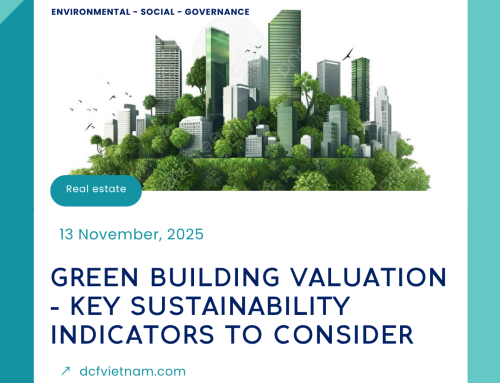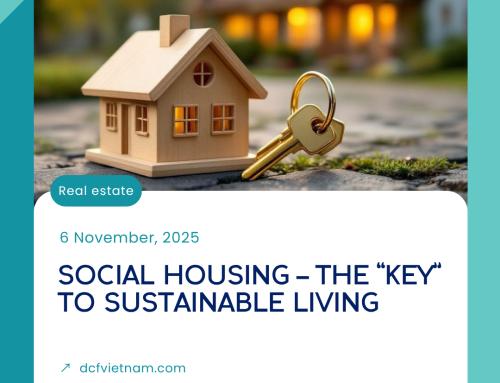
Introduction
40%
total global CO₂ emissions related to energy and industrial processes
from the Construction and Real estate
18%
Sector's Embodied Carbon
Emissions from materials & construction
Net Zero
Vietnam's Commitment
Vietnam officially pledged to achieve Net Zero by 2050 (COP26)
According to the IPCC AR6, WGIII Report (2022/2023), the construction and real estate sector accounts for around 40% of total global CO₂ emissions related to energy and industrial processes. Within this, embodied carbon—emissions from building materials, cement and steel production, transportation, and construction—makes up approximately 18% of the sector’s total CO₂ emissions.
A UNEP report, Building Materials and the Climate: Constructing a New Future (2023), also confirms that the construction and building materials industry is one of the largest emission sources, with cement, steel, and aluminum contributing significantly to embodied carbon.
On the international commitment front, at COP26, Vietnam officially pledged to achieve Net Zero by 2050. In parallel, mechanisms such as the EU Taxonomy and the Carbon Border Adjustment Mechanism (CBAM) are being advanced, meaning that commercial real estate projects developed without attention to ESG will face increasing difficulty in accessing international capital markets.
Therefore, the future of commercial real estate in Vietnam must view carbon emission reduction not merely as an optimization measure during the operational phase (electricity, water, HVAC, lighting, etc.), but as a process that begins right from the design and construction stages—since traditional materials such as cement and steel are major contributors to embodied carbon.
Carbon reduction is no longer an option to simply “polish ESG credentials”; it has become a matter of survival for Vietnam’s commercial real estate. This shift is essential for the sector to remain competitive against international rivals, particularly within ASEAN, where countries like Singapore and Thailand have already made significant progress in carbon reduction within real estate. Furthermore, ensuring lower carbon emissions enables developers to gain easier access to FDI and green financing, in line with international policy frameworks and capital markets that increasingly prioritize low-carbon assets.
Carbon Emissions in Commercial Real Estate – Sources and Challenges in Vietnam
Carbon emissions in commercial real estate can be divided into two main categories: Embodied Carbon (emissions from materials and construction processes) and Operational Carbon (emissions during the operational phase). Embodied carbon arises from cement, steel, and glass production, transportation, and on-site construction; while operational carbon is generated continuously throughout the building’s lifecycle, mainly from electricity, water, HVAC, and lighting systems. According to the World Green Building Council, operational emissions account for about 28% of global energy-related emissions, while embodied carbon accounts for around 11%.
For newly designed and efficiently operated commercial buildings, operational emissions can be significantly reduced through energy-saving technologies. However, as operational emissions decrease, the share of embodied carbon in the total lifecycle increases—rising to as much as 40–50% of a building’s overall emissions (Lützkendorf et al., 2022, Buildings and Cities Journal). This highlights that even when a building achieves energy efficiency standards, if its materials have high carbon intensity, total lifecycle emissions remains high, undermining carbon reduction goals.
Challenges in Vietnam
In Vietnam, this challenge is particularly acute. Domestically produced cement emits on average 725–750 kg CO₂ per ton, higher than the global average. The steel industry also relies heavily on traditional blast furnace–basic oxygen furnace technology, which has much higher emission intensity. Furthermore, many commercial real estate projects have not yet conducted lifecycle carbon assessments (LCA), resulting in a lack of transparency for investors and tenants.
From a policy perspective, Vietnam is only at the early stage of piloting an emission trading system, while there is still no carbon tax or strong incentive mechanism for low-carbon buildings. As a result, developers lack sufficient financial motivation to select green materials and technologies. Additionally, the adoption of green materials requires advanced design, construction, and project management expertise, which is not yet widespread in Vietnam’s construction sector.
In summary, reducing carbon emissions in Vietnam’s commercial real estate faces three key challenges:
This is not merely a technical issue but a strategic imperative: unless carbon reduction goals are integrated from the design and construction stages, Vietnam’s commercial real estate will struggle to become an attractive destination for international tenants and FDI in the low-carbon era.
Mechanisms for Carbon Reduction in Commercial Real Estate
Carbon reduction in commercial real estate is not merely a technical objective but a critical business strategy that enhances a building’s attractiveness to international tenants and foreign investors. Reduction mechanisms can be implemented across three main pillars: design/construction, operations, and lifecycle management.
3.1. Reducing emissions from the design and construction stage
Embodied Carbon is the most difficult to reduce. This share can rise to 40–50% of a building’s overall emissions. Alternative materials (low-clinker cement, recycled steel, Low-E glass) can reduce construction-phase emissions by 20–30%. Initial costs typically increase by about 5–15%. While this additional investment may discourage some developers, it creates long-term benefits: many international tenants have incorporated “green building” requirements into their office leasing strategies to support ESG reporting. Smart design solutions target cooling costs—which account for 40–60% of total electricity consumption in commercial buildings in Vietnam.
3.2. Reducing emissions during the operational phase
Operational improvements can deliver 20–40% energy savings (VNEEC, 2022). Incremental costs can reach up to 20% of initial investment. However, the adoption of green materials often extends construction timelines (sometimes 10–15% longer), the additional upfront costs and time should be viewed as necessary investments to secure long-term benefits in energy savings, carbon reduction, and enhanced commercial value. Reducing operational carbon, therefore, is not just a technical solution but a strategic factor directly influencing profitability and market competitiveness in commercial real estate.
3.3. Carbon footprint accounting and applying the circular economy model
Lifecycle carbon footprint accounting enables developers to identify the main emission sources and design effective reduction plans. The implementation of Circular Economy principles significantly reduces the embodied carbon emissions associated with new material production, while simultaneously optimizing capital expenditure. Buildings designed with circularity enhance their attractiveness to global investment funds (GIC and BlackRock). Investing in these solutions reduces policy risks and strengthens market credibility, securing long-term competitive advantages.
Illustrative Case Study – International Practice
Case Study – Keppel Bay Tower, Singapore
Keppel Bay Tower became Singapore’s first net-zero energy commercial building in 2020. By applying circular economy principles—reusing steel and concrete while upgrading mechanical and electrical (M&E) systems—the project avoided tens of thousands of tons of CO₂ emissions compared to a new-build scenario. At the same time, energy-saving technologies such as high-efficiency HVAC systems, LED lighting, and smart sensors reduced electricity consumption by an additional 20% relative to conventional benchmarks.
The project avoided tens of thousands of tons of CO₂ emissions compared to a new-build scenario. Keppel Bay Tower successfully improved occupancy rates, increased rental values, and attracted FDI capital, demonstrating that combining lifecycle carbon footprint accounting with circular economy practices generate sustainable added value.
Carbon Tax in Commercial Real Estate
The EU’s Carbon Border Adjustment Mechanism (CBAM) is advancing. In the medium and long term, a domestic carbon tax or carbon credit system will soon become a mandatory cost component in Vietnam.
Projects using green materials may face higher upfront investment costs, but they avoid the risks of carbon tax volatility, more easily obtain green certifications, attract international tenants, and access FDI capital. Conversely, buildings relying on high-emission materials risk losing appeal to global tenants.
Conclusion
Carbon emission reduction in commercial real estate has become a core competitive strategy. It is a long-term business lever that enhances brand value, market liquidity, and competitiveness. In practice, numerous studies and international transactions have shown that ESG-compliant green buildings are often valued higher, with premiums of 5–10% compared to conventional assets, thanks to their lower operating costs, stronger appeal to investors, and ability to sustain stable cash flows.
AUTHOR &
CONTACT INFORMATION
REFERENCES
- Intergovernmental Panel on Climate Change. (2022). Climate change 2022: Mitigation of climate change. Contribution of Working Group III to the Sixth Assessment Report of the Intergovernmental Panel on Climate Change.
- Nguyen, T., Pham, H., & Le, A. (2024). Case studies in construction materials. Case Studies in Construction Materials.
- Keppel Land. (2020). Retrofitting Keppel Bay Tower for a zero-energy future.
- MIT Real Estate Innovation Lab. (2020). The future of sustainable buildings. Massachusetts Institute of Technology.
- Dwaikat, L. N., & Ali, K. N. (2016). Green buildings cost premium: A review of empirical evidence.
DISCLAIMER
This content is the product of the author and does not reflect the views or stance of DCF Vietnam Corporation. Furthermore, this content is not intended to create a valuer-client relationship, does not constitute valuation/consultation, and does not replace professional valuation/consultation services. Actual and specific situations or assets require consultation with a professional valuer before taking any action related to the subject matter discussed herein.





